for a longer time I have not visited this forum , but last month I had more time for ant keeping and study ants - and it just means that I have created some formicaries and still working on some.
I always say , we all as ant keeping community need to improve and test many unusual kinds and mechanism in formicaries , hope that ants will accept that and so. If you do not agree , nevermind
So , here is my "Project Stormhold" and its fotodocumentary.
PROJECT STORMHOLD
This formicary has been made in aquarium in size of 40x25x25 cm. It is not big ... I agree.
I have used too:
- technical cork plate 15mm (made of 0,5-1mm pieces - stronger than usual 2-4mm pieces)
- cork soil - dirt of cork pieces ca 0,5-1mm
- my mixture of soil
- natural things - leafs etc
- PTFE , glue...
Not so expensive , only that cork is little big expensive, here in Slovakia 940 x 635 x 15 mm = 20,33 € - but it is so big that I have made 2 bigger and 2 smaller formicaries with that.
****************************************************************************
This formicary is whole prototype. I can say that I have no longer experiences with keeping of Lasius fuliginosus.
I´ve tried to make formicary , which may be good for ants aswell , same it looks nicely when I show it to girls lol
It is little bit compromise between me and ants always.
Lasius fuliginosus
Workers <4mm
Queen + - 6,5mm
- strong shiny black body with massive head
They build nests mostly in hollow trees , sometimes in buildings or dead wood on ground. Whole nest is cartoon-type made of sugar mixture (ca 50 percent) mixed with pieces of soil and wood. This material is many times fixed with Cladosporium myrmecophilum fungus.
It is hyper-parasite , its host is mostly Lasius umbratus , but L. mixtus , L. brunneus also possible , rarely Lasius niger or L.alienus.

****************************************************************************
Before I started to build a formicary , I checked internet to see experience of other ant-keepers in keeping of Lasius fuliginosus. I can say that I´ve not found so much of quality materials or keepers who keep bigger colonies.
I think the best information gave me Frank Mattheis http://www.eusozial.de/viewtopic.php?f=26&t=666 , experienced German ant-keeper.
Very motivational was his concept of simply ant-display type nest heated by lamp. It is good made , because in nature are Chtonolasius and Dendrolasius nests very hot inside , many times more than 35°C in.
You can see in his topic , how walls and structure of nest change by changing ratio of L.umbratus and L.fuliginosus worker numbers.
Structure of these chambers was essential info for me.
Showcase of Frank Mattheis´s nest:

I can say that I can thank to local myrmecologists/taxonomist by keeping informations for me too.
****************************************************************************
Ok , so let it start.
Aquarium with cork table and pieces I´ve cut off - 3 same sized pieces.
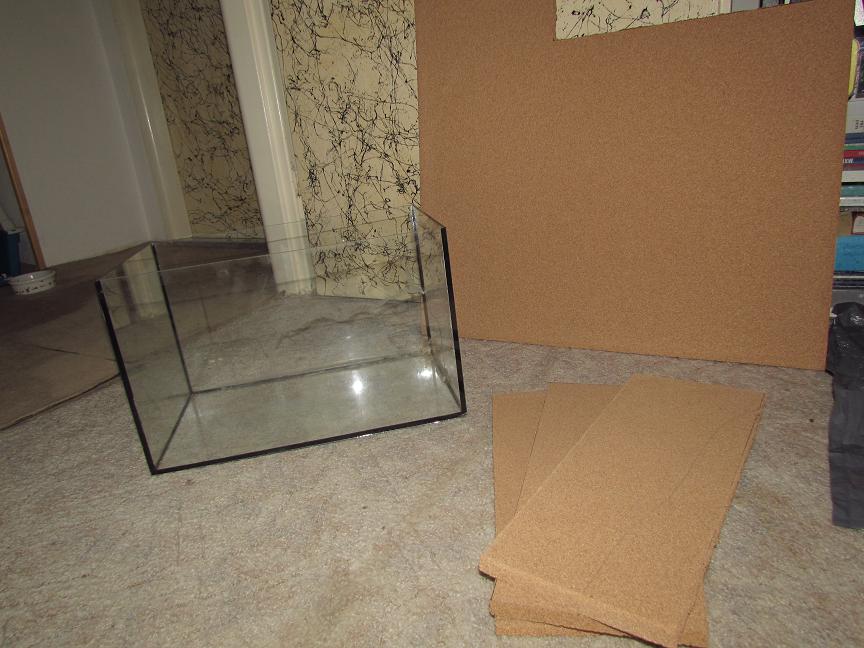
Idea was to make it nice looking and too big to create bigger capacity for bigger colony inside. So I will no ban them to dig or not to estamblish nest somewhere where I do not want - they can do it everywhere they want.
Well , I´ve made "L" style cork nest , what is secondary nest for them. I wish they will live there and grow there. When they grow up so much , they can live in primary nest in arena.
So...
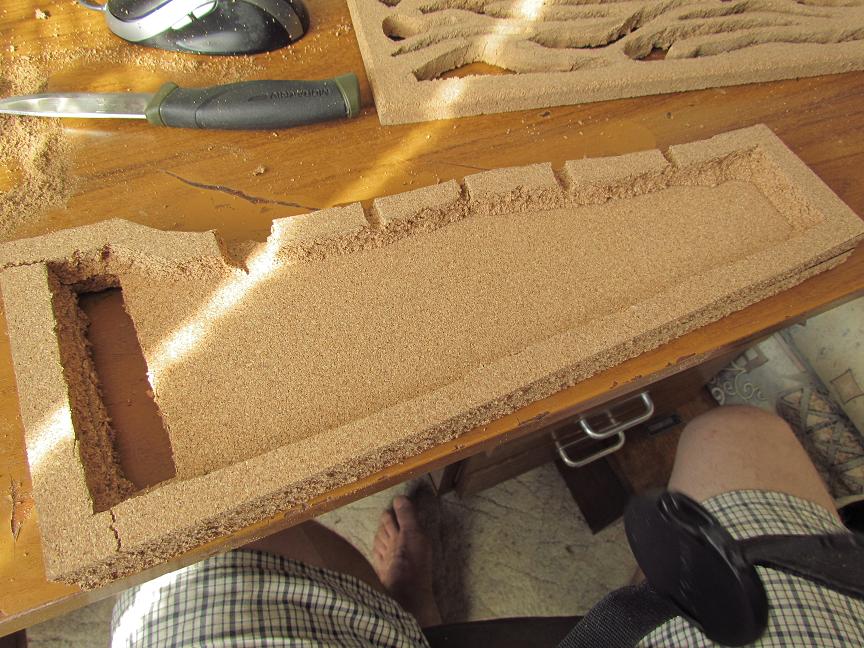
Here you can see all 3 pieces. First is just a whole nest cover from behind with hole to second part ("L" shape) , second is something like frame , this all will be filled of soil mixture. Third is chamber part - it is not neccessary , but it looks good , same filled with mixture.
On top of "frame part" you can see enters to the nest , one primar , some smaller.
Transfer to second part of the nest:
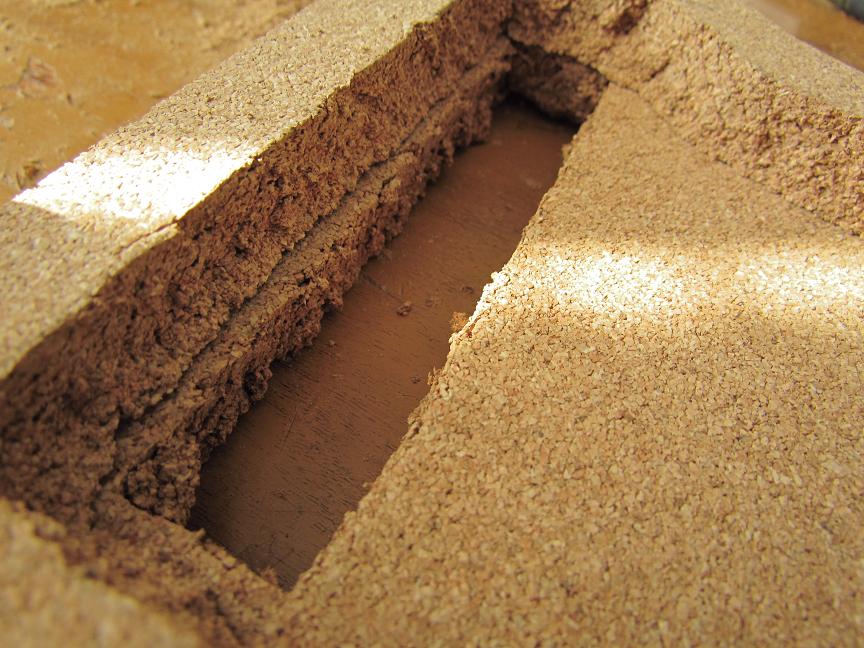
As I said , I will be happy when colony grow up to fill all this "L" part ... and will try to create bigger nest in all aquarium. As we all know , ants can dig in cork. But this one is stronger ... so I have made small scars to make it easier to their mandibules.
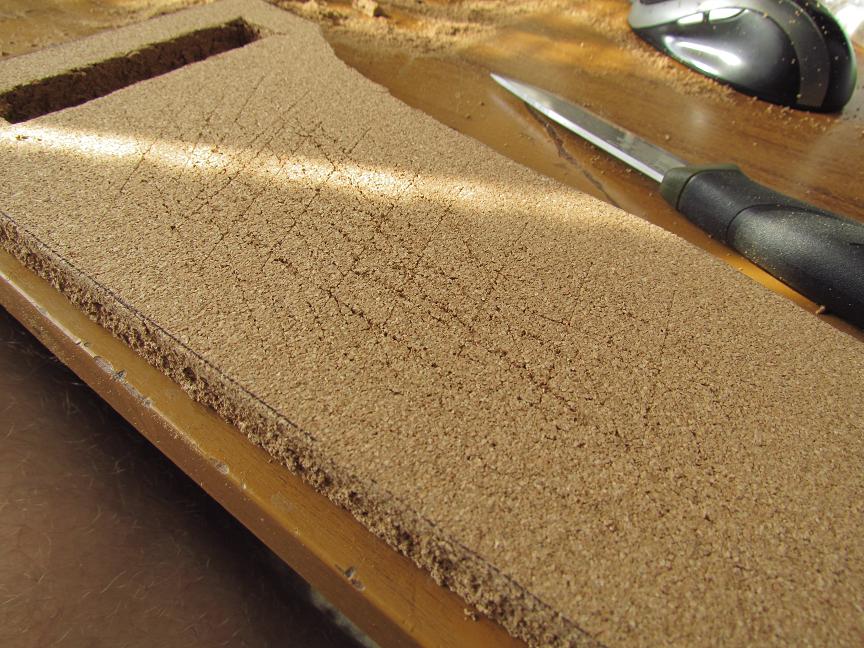
All 3 pieces glued together:
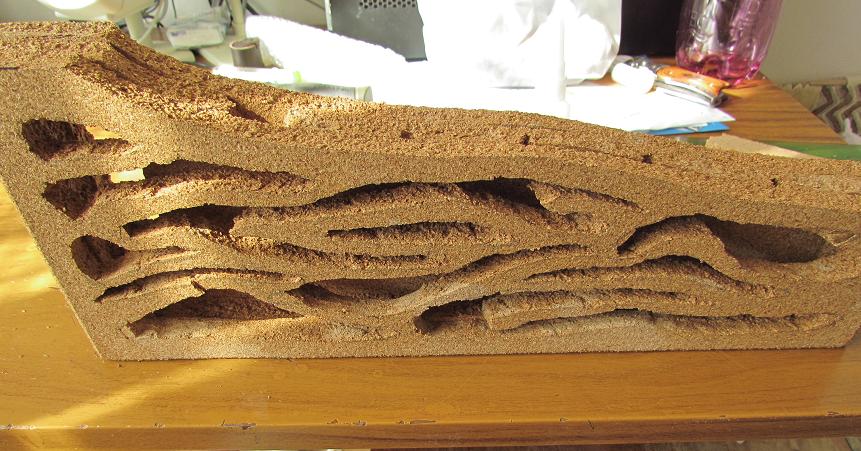
Second part , what I joined to first part - transfer to first part on picture.
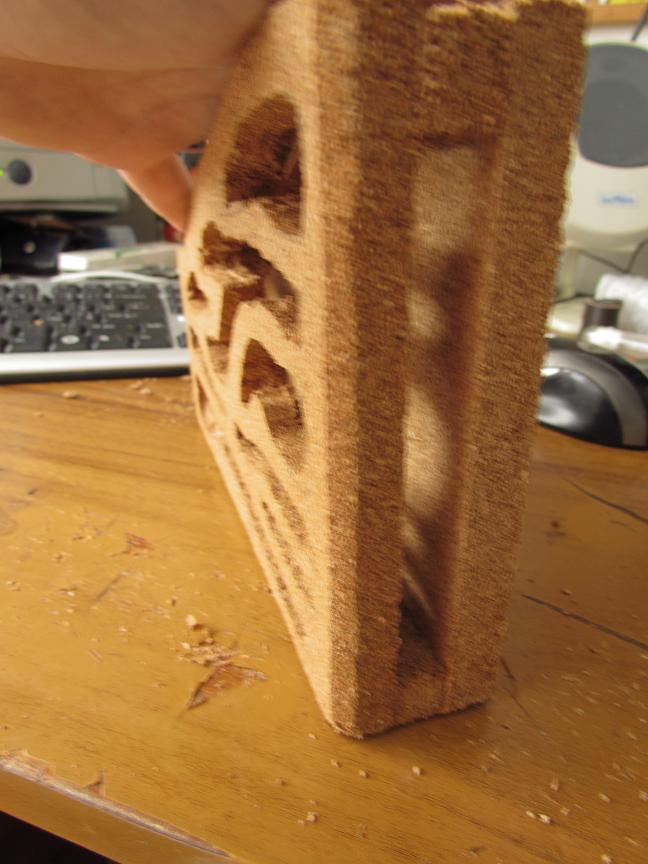
Here are all two blocks situated in aquarium for better imagination. In my hobble opinion , this material looks very pretty. These cork parts are not glued to the glass ... they are well cut and stay there btw glasses of aquarium itself.
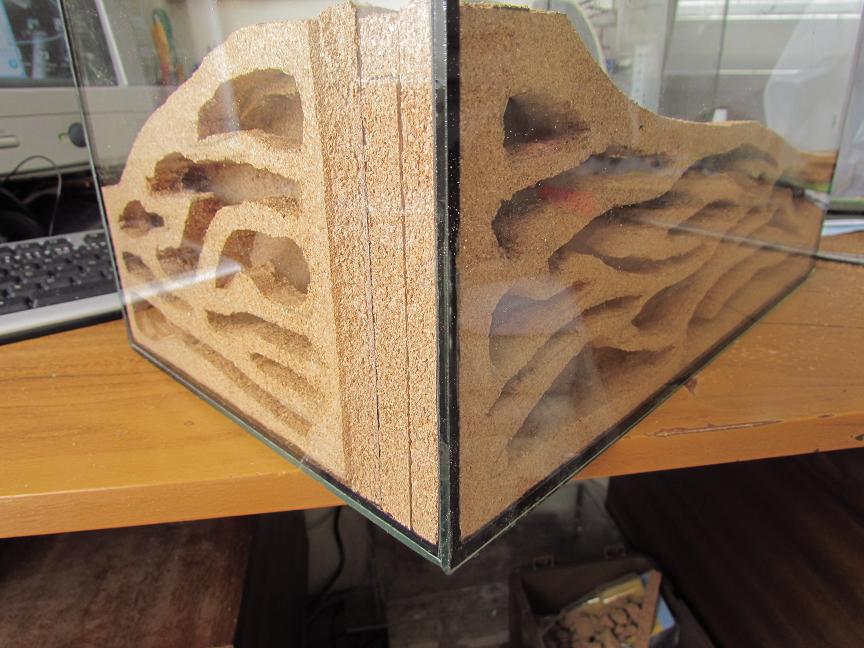
How I said , this all will be filled with nest material , to make material to create cartoon walls there , or just fill it not to scare small colony inside.
It is mixture of:
40 percent cork dirt (0,5-1mm)
40 percent cocoo soil with peat (this mix I had in tank all wet on my balcoon for 1 year and became very dark black humus)
20 percent soil from inside of tree (I´ve just found live tree with hole and digged that wood dirt from there)
I´ve tested it on pieces of glasses , if it glue on glass (not to see into nest) or not. It does not paste on it , almost.
It get moisture very well
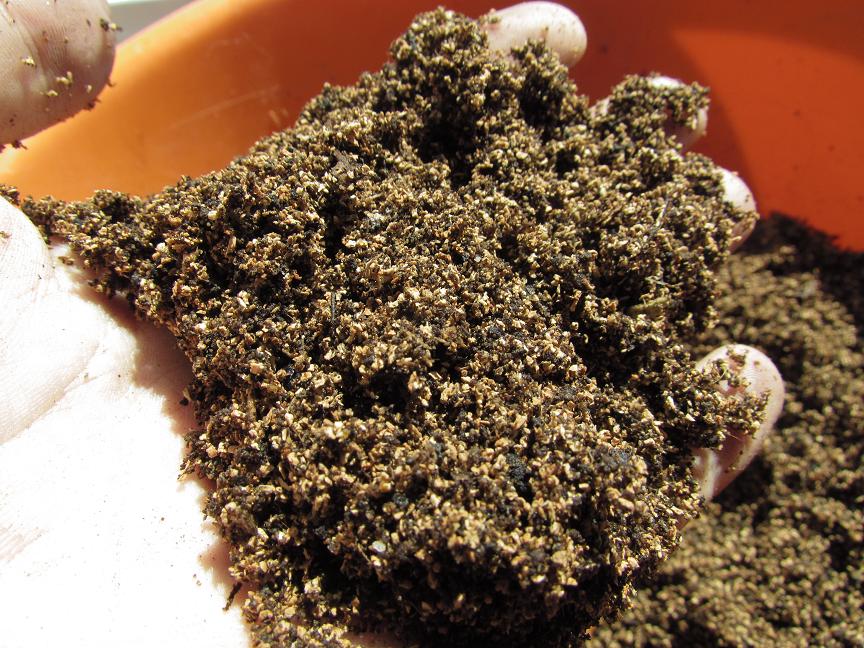
This is primar part of nest - part where they can live when whole "L nest" will be filled. Some cork pieces there fix these cork blocks - because there was hole ca 2mm btw cork block and aquarium. Now it is all fixed. I´ve put also pieces of block horizontally on it ... - to easier make of arena surface.
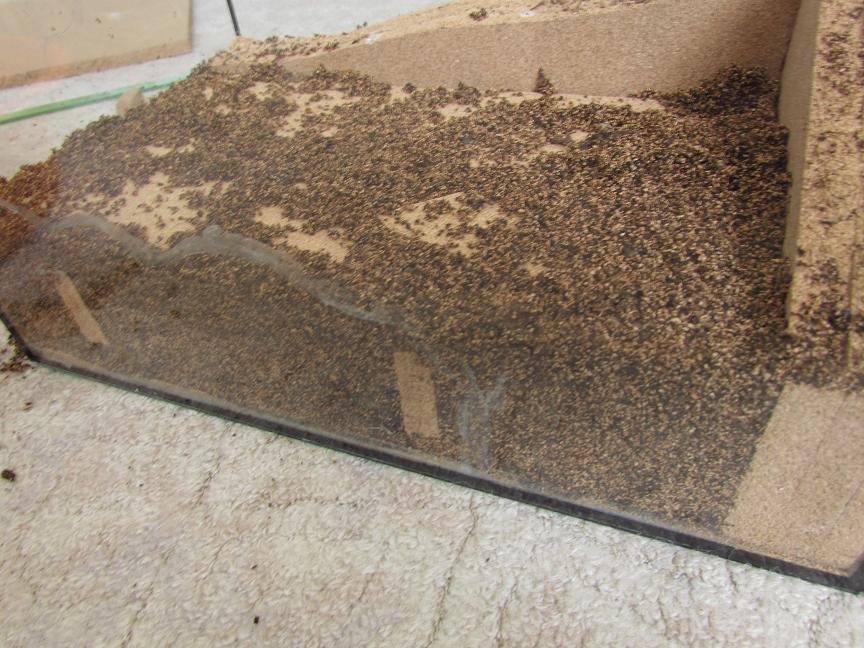
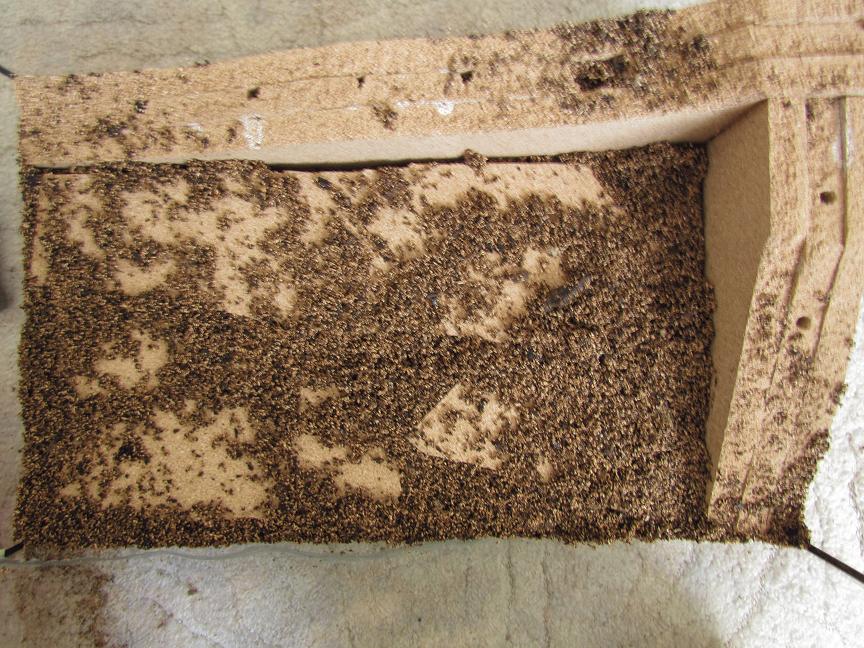
With triangle pieces of cork I´ve made this hill , to make a construction of bark put on it in arena scheme.
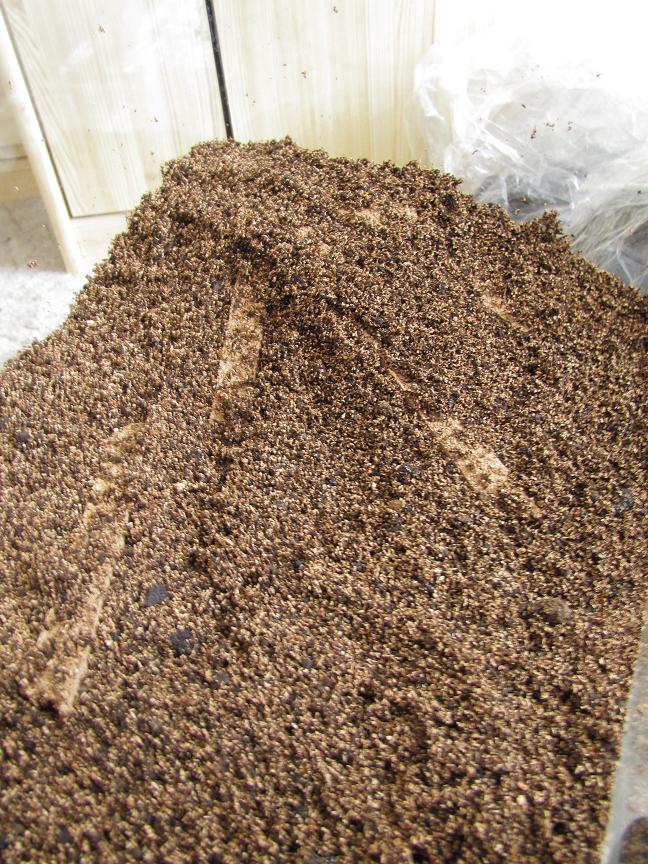
Formicary filled with mixture - top chamber half empty:
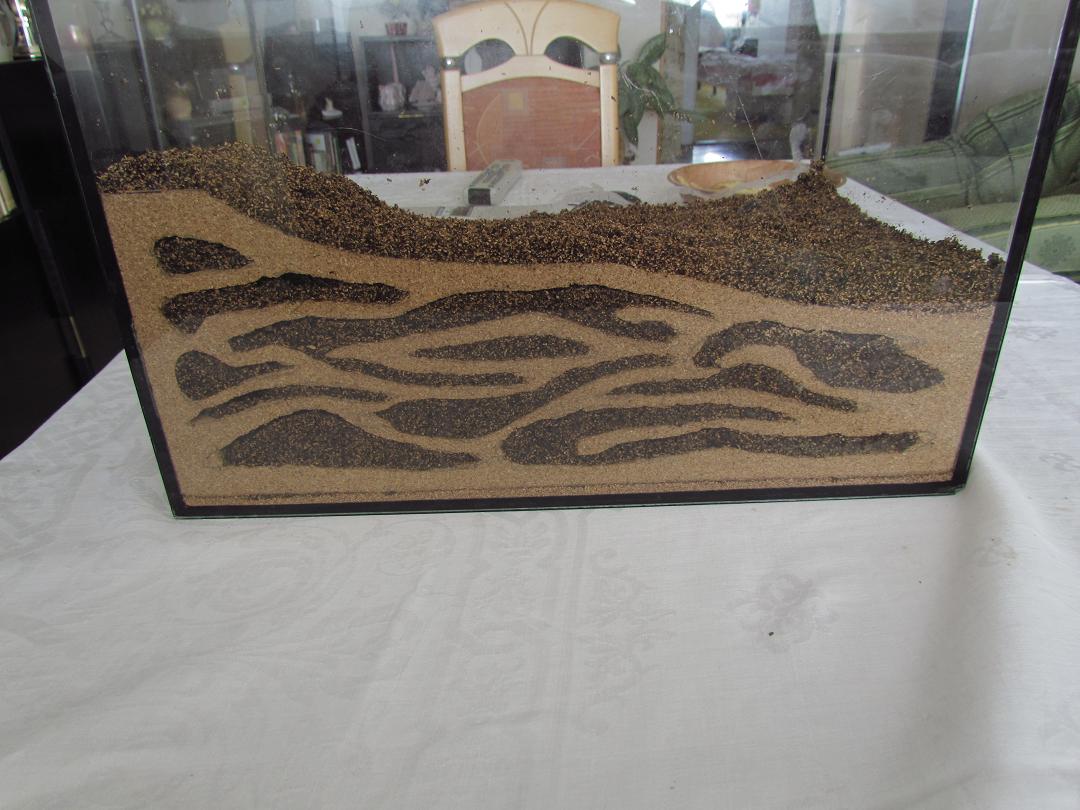
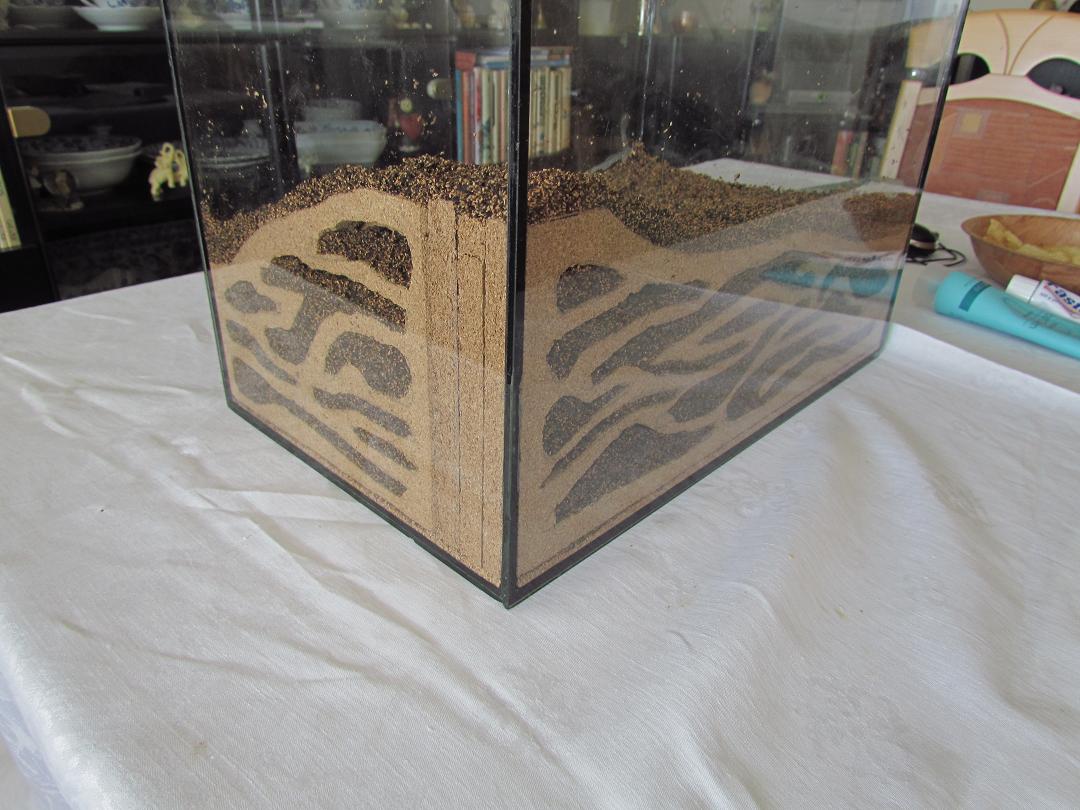
I think it looks pretty in real , on photos little bit poor
Arena surface:
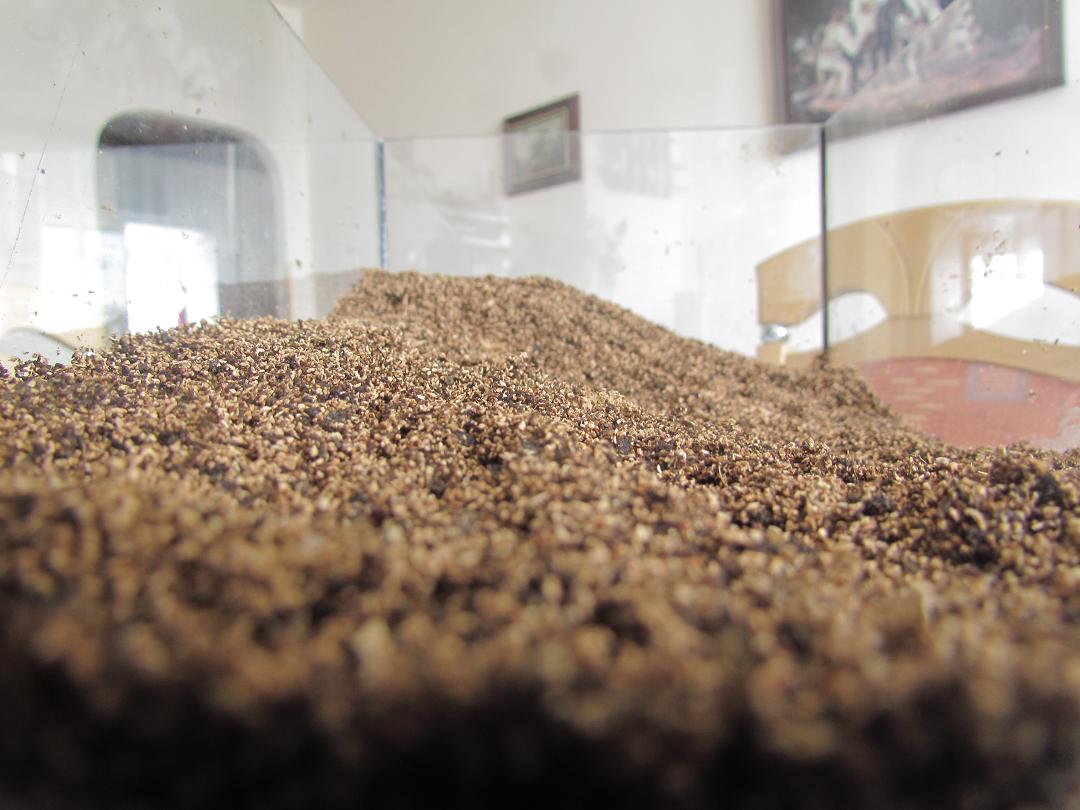
And finally , whole surface. There is also ca 1cm of forest soil and on it put moss and bark , leafs and some underground species of insects (Colembola etc.)
I like this species of moss , it is all green , when it die or it is dry. Can you imagine , that all that green moss is from my box where i have it situated for 2-3 years for these purposes? , very interesting
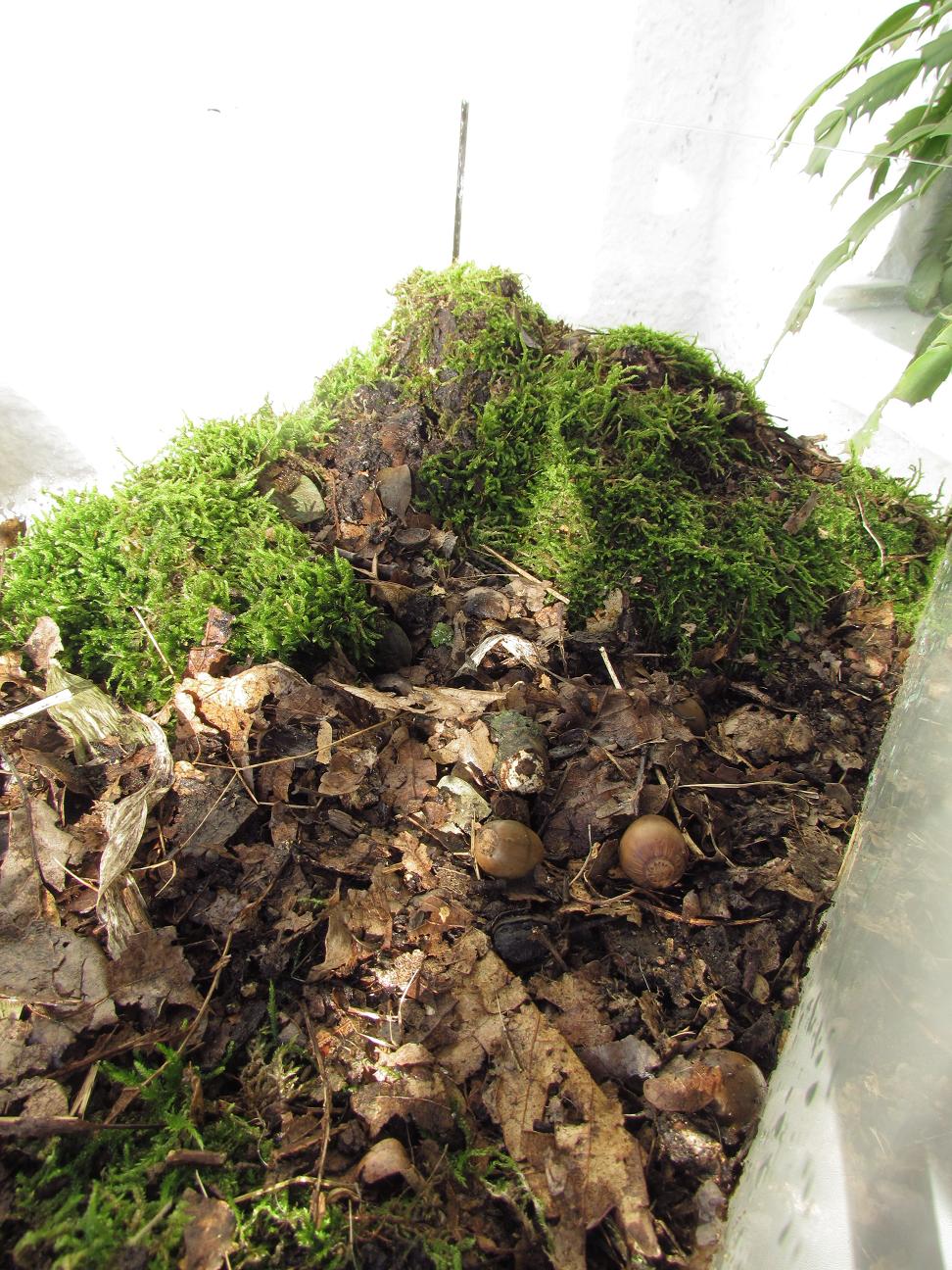
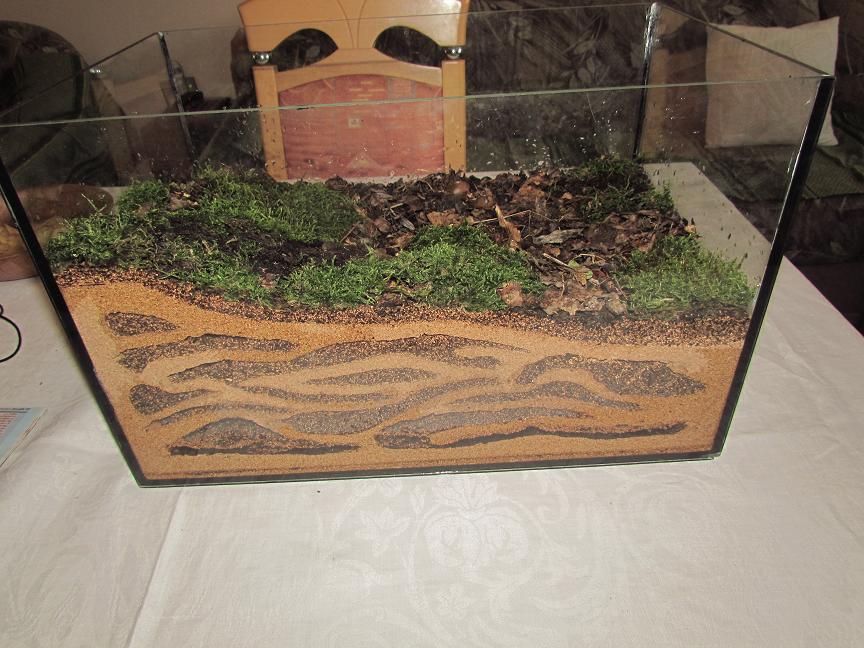
That "hill" is almost all covered of pieces of bark. In real it looks like piece of root show a top from ground. There are made these holes from nest parts under these bark pieces. It looks good and I can say my colony loves it.
Watering - I just put water in arena , soil moisture it very well. Every morning I spray water on mosses and surface , not to kill these small animals what lives there.
Colony of Lasius fuliginosus is actually about 1 queen and ca 50 host workers.
I hope you like it
Adrian
